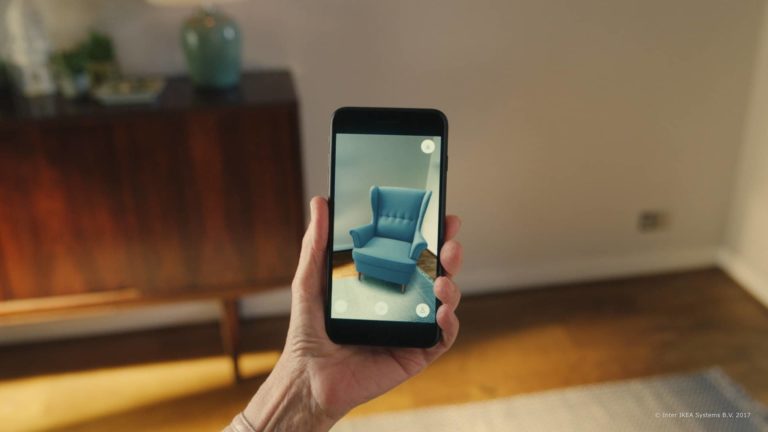
I
mmersive shopping is proving to have experiential impact for consumers, and revenue impact for brands. Related to – but separate from – AR advertising, this is when AR is used as a tool to visualize and contextualize products to engender more informed consumer purchases.
This is a subset of AR that we call camera commerce. It comes in a few flavors, including visualizing products on “spaces and faces.” It also includes visual search – pointing one’s smartphone camera at a given product to get informational, identifying, or transactional overlays.
In each case, AR brings additional context and confidence to product purchases. And this value has been elevated during a pandemic, as AR brings back some of the product dimension and tactile detail that’s been taken away from consumers during retail lockdowns.
Synthesizing these factors, ARtillery Intelligence recently produced a report to dive into the drivers and dynamics of camera commerce. How is the field shaping up? Who’s doing what? And how big is the market opportunity? We’ve excerpted the report below for AR Insider readers.
Reducing Returns
After covering AR shopping conversion rates in the last report excerpt, it’s time to dive into the second major outcome for AR product visualization: reducing returns. The same “informed purchase” that drives conversions can lessen return rates through a better sense of style and fit.
With that backdrop, what validation are we seeing for AR’s ability to lessen returns? Like we did earlier for conversion boosts, here’s a quick list of proof points.
— Shopify reports a 40 percent decrease in returns from 3D visualization.
— SeekXR reports a 25 percent decrease in returns from AR-guided purchases. This comes directly from its work with large-scale e-tailers like Overstock.
— Build.com reports that the return rate for shoppers that use its AR product visualization features is 22 percent lower than non-AR benchmarks.
— Gunner Kennels has achieved a 5 percent decrease in returns and a 3 percent boost in cart conversion rates.
— Macy’s used in-store VR (similar concept) to reduce returns to less than 2 percent, versus industry-standard retail return rates of 5-7 percent.
Pain Point
One notable aspect of the above data is AR’s the consistency in reducing return rates for various product categories. Many return-rate deltas are in the same 20-40 percent range. In all cases, AR is proving its ability to improve margins and demonstrate a tangible business case.
Why is this important? Returns are a $550 billion problem in the aggregate. And for e-tailers that operate on extremely thin margins, returns can cause quite a bottom-line blow. That pain point is amplified by bulky items that are expensive to ship, such as couches and TVs.
So alleviating that pain point is music to the ears of several brands and retailers. Over the past decade, escalating competition in eCommerce has created downward pricing pressure on e-tailers, forcing many to offer free shipping. Amazon has been a big cause of this pressure.
The result is that e-tailers’ margins are compressed, forcing them to operate on the same razor-thin margins that Amazon does….but without the volume to make up for it. So with such little margin to work with, additional expenses cut deeply into profits….especially with 2-way returns.
With that backdrop, e-tailers welcome any means that can lessen this pain point. Because AR visualization gives consumers a better sense of size, color and dimension (especially in an eCommerce-accelerated pandemic), products are proving less likely to be returned.
We’ll pause there and circle back in the next report excerpt to dive deeper on AR shopping strategies…

